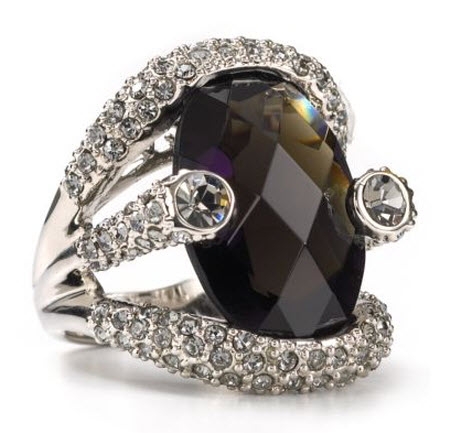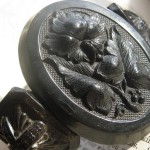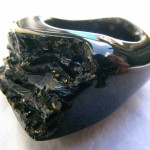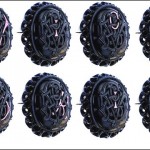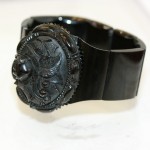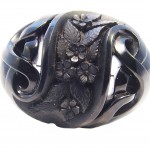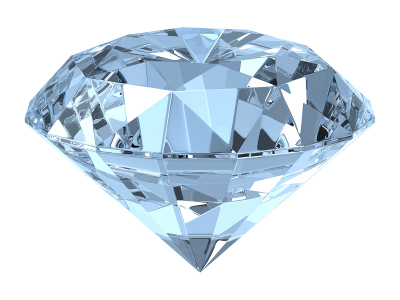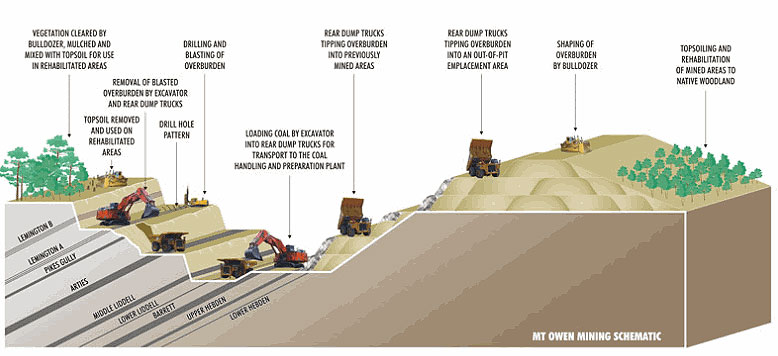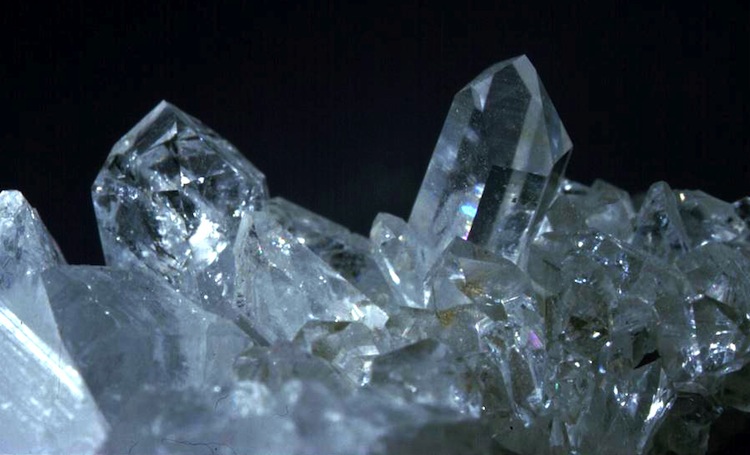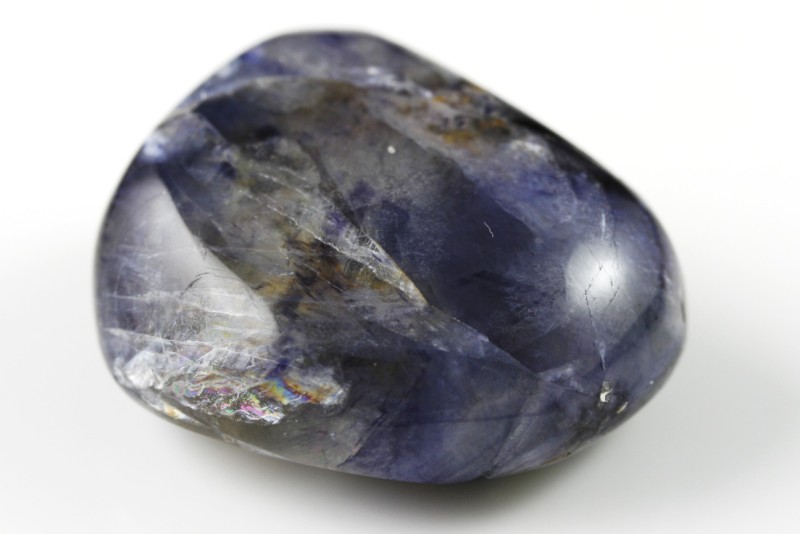Jet is fossilized wood formed from a species of Araucaria (the monkey puzzle tree). It is synonymous with the colour black and can be highly polished to give an intense black colour that never fades. When polished the material is so reflective that pieces of Jet were even used as mirrors in medieval times. It is a tough material but lacks hardness, which makes it easy to carve but also easily scratched and damaged.
Jet is found in small deposits around the world, in countries including the UK, France, Germany, Spain and the USA. Deposits vary in quality from region to region, largely dependent on the levels of trace elements such as aluminium, silicon and sulphur.
Deposits from around Whitby in North Yorkshire have high levels of aluminium and this produces Jet of extremely high quality. Jet has been used in the manufacture of jewellery and tokens since the bronze age.
Since that time a wide range of items have been made from the material from Roman medallions to Victorian mourning rings and on to the modern silver and Jet items popular today. After a long history, Whitby Jet is once again the jewellery of choice and none more so than the original Victorian pieces.
Whitby Jet was much favoured by the Victorians as a material for the manufacture of beautiful jewellery. With its light weight, deep black lustre and warm touch to the skin it was both practical and elegant. The passion for Jet has often outstripped the capacity of the natural reserves and spawned many imitators.
During the reign of Queen Victoria protocol dictated that only Jet jewellery could be worn at court during periods of official mourning. This royal endorsement confirmed the status of Jet as the material of choice for mourning jewellery and fuelled the expansion of the Jet industry in the late 1800’s. Never was this more so than in the period following the death of Victoria’s husband Prince Albert from typhoid fever in December 1861.

